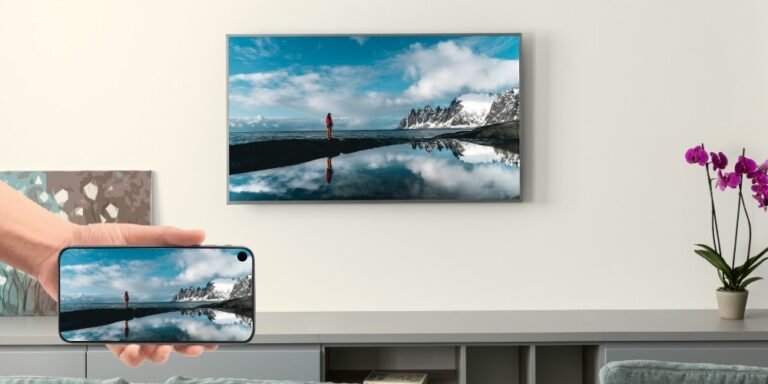In today’s world of interconnected devices, understanding how to connect them seamlessly is essential. Whether you’re connecting your phone to your TV wirelessly, setting up Bluetooth, or linking devices through Wi-Fi, the process can seem daunting at first. This article will guide you through the most common ways to connect your devices, with a special focus on connecting your phone to your TV wirelessly.
Understanding Connectivity Basics
Connecting devices means establishing communication between two or more gadgets so they can exchange data, mirror screens, or share media. This connectivity can be achieved through:
1. Wireless Methods:
- Wi-Fi: Used for media streaming or screen mirroring.
- Bluetooth: Best for audio devices or file sharing over short distances.
- NFC: Enables tap-and-go pairing for devices.
2. Wired Methods:
- HDMI: Connect devices like TVs or monitors.
- USB cables: Used for charging or data transfer.
Now, let’s dive into the specific steps to connect your phone to your TV wirelessly.
How to Connect Your Phone to Your TV Wirelessly
Connecting your smartphone to a TV without cables has become incredibly easy with the availability of screen mirroring technologies and apps. Here are some of the best methods to do it.
1. Using Screen Mirroring (For Smart TVs)
Most modern TVs come equipped with built-in screen mirroring features like Miracast or AirPlay.
Steps to Use Screen Mirroring:
- Ensure both devices are on the same Wi-Fi network.
- For Android Phones:
- Swipe down to access the Quick Settings menu.
- Look for Cast, Screen Mirroring, or Smart View (the name depends on your device).
- Tap the option and select your TV from the list of available devices.
- For iPhones:
- Open the Control Center by swiping down (iPhone X or later) or up (earlier models).
- Tap on Screen Mirroring and select your TV.
Note: Your TV must support Miracast for Android devices or AirPlay for iPhones.
2. Using Streaming Devices (Chromecast, Roku, or Fire Stick)
If your TV doesn’t have built-in screen mirroring, you can use a streaming device to bridge the gap.
Steps for Chromecast:
- Plug the Chromecast device into your TV’s HDMI port.
- Install the Google Home app on your phone.
- Open the app, and select Cast screen/audio.
- Choose your Chromecast device from the list.
Steps for Roku or Fire Stick:
- Follow a similar process by installing the respective app on your phone and enabling screen mirroring.
3. Using Dedicated Apps (e.g., YouTube, Netflix)
Many popular streaming apps come with built-in casting features.
Steps to Cast from Apps:
- Open a streaming app like YouTube or Netflix.
- Play a video and tap the Cast icon.
- Select your TV from the list.
Pro Tip: Ensure that both devices are on the same Wi-Fi network for a smooth connection.
4. Using DLNA Technology
DLNA (Digital Living Network Alliance) is another option for sharing content wirelessly. Many Android phones and TVs support this.
Steps to Use DLNA:
- Install a DLNA-enabled app on your phone (e.g., Plex or BubbleUPnP).
- how to connect your phone and TV to the same Wi-Fi network.
- Use the app to select and share content with your TV.
5. Via Bluetooth (Limited Use)
Some TVs allow you to connect your phone via Bluetooth, but this is mainly for sharing audio rather than mirroring the screen.
Steps to Connect via Bluetooth:
- Enable Bluetooth on both your phone and TV.
- Pair the devices by selecting your TV in the Bluetooth settings on your phone.
Tips for a Seamless Connection
- Check Compatibility: Ensure that your phone and TV support the same screen-mirroring technology.
- Update Software: Keep your devices’ firmware and apps updated.
- Stable Wi-Fi Connection: Use a reliable Wi-Fi network to avoid lag.
- Use High-Quality Devices: Investing in a good streaming device can enhance your experience.
Benefits of Connecting Your Phone to Your TV
- Enhanced Viewing Experience: Watch videos and photos on a larger screen.
- Convenience: Stream online content effortlessly.
- Gaming: Play mobile games on your TV for a better experience.
- Presentations: Share documents or presentations wirelessly during meetings.
Frequently Asked Questions
Q1: What should I do if my phone won’t connect to my TV?
- Check if both devices are on the same Wi-Fi network.
- Restart your phone, TV, or streaming device.
- Ensure compatibility with the chosen connection method.
Q2: Can I connect my phone to a non-smart TV wirelessly?
Yes, but you’ll need a streaming device like Chromecast, Fire Stick, or Roku.
Q3: Is screen mirroring the same as casting?
No, casting allows you to play specific content on your TV while using your phone independently, while screen mirroring replicates your phone’s display on the TV.
Connecting devices has never been easier. By understanding how to connect wireless options available, you can enjoy a seamless experience, whether you’re watching a movie, sharing photos, or presenting slides. Choose the method that suits your setup and enjoy the benefits of a connected lifestyle!

